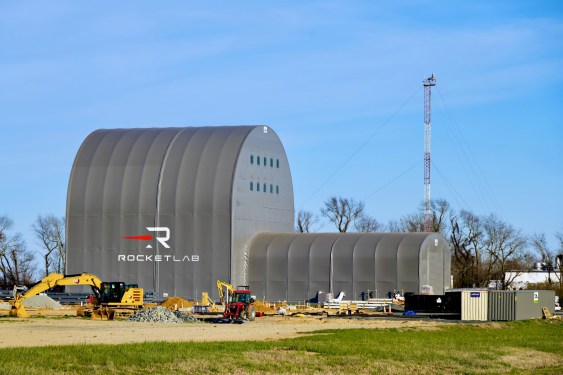Rocket Lab has requested regulatory approval to transport oversized structures for its Neutron rocket through shallow waters to a spaceport off the coast of Virginia. This urgent request, submitted in July, serves as a temporary solution while the company awaits federal approval to dredge a permanent channel to the Wallops Island launch site. The company is racing to meet a September deadline for delivering these large rocket components.
Rocket Lab aims to launch its Neutron medium-lift rocket from the Mid-Atlantic Regional Spaceport (MARS) on Wallops Island, Virginia. This spaceport experiences less traffic compared to busier sites and is surrounded by shallow channels and waterways. Currently, Rocket Lab launches its smaller Electron rocket from this location.
Before the Neutron rocket can make its first orbital flight, Rocket Lab has several key milestones to accomplish, including mating the rocket’s stages, conducting a “wet dress” rehearsal, and securing a launch license from the Federal Aviation Administration. However, the first crucial step is to get the Neutron hardware safely onto the island.
To address this, Rocket Lab filed an application with the Virginia Marine Resources Commission (VMRC) in March, proposing a dredging project. In its application, the company emphasized the advantages of MARS, noting that other launch facilities in Florida and elsewhere are highly congested. This congestion could restrict the frequency of launches. In contrast, MARS offers the potential for both frequent launch cadence and the ability to recover boosters after launch, a key capability for Rocket Lab’s operations.
Despite these benefits, MARS faces a significant challenge: limited maritime infrastructure. Access to the existing channel, known as Sloop Gut, heavily depends on favorable tidal conditions. Rocket Lab and its co-applicant, the Virginia Port Authority, pointed out that there is currently no permanent, safe, and reliable access for transporting large infrastructure to Wallops Island. Unlike the smaller Electron rocket, which is transported by road, Neutron’s larger components require barge delivery via the waterways.
Rocket Lab has heavily invested in preparing MARS to support regular Neutron launches. The company plans to spend over $5 million dredging the roughly one-mile-long Sloop Gut channel to allow barge deliveries of large rocket parts. Although VMRC approved the dredging plan in May, the project has not begun because final federal clearance from the Army Corps of Engineers is still pending.
While awaiting this federal approval, Rocket Lab and the Virginia Port Authority are requesting permission to use a temporary maritime method called “kedging” for the first five hardware deliveries scheduled to start in September. Kedging is a nautical technique where anchors and lines are used to carefully maneuver barges through shallow waters, ensuring safe passage despite the channel’s limitations.
Rocket Lab seeks approval to use kedging through June 2026 or until the dredging project is complete, whichever occurs first. The exact duration of the dredging remains uncertain.
If kedging is not authorized promptly, Rocket Lab has indicated it could resort to an alternative approach—transporting the rocket structures over the beach with ramps and cranes. The company received permission for up to three beach barge landing tests, but these operations are prohibited from March 15 through August 31, making this an unviable long-term solution.
In its dredging application, Rocket Lab also evaluated other options such as overland transport and use of a public boat ramp. However, these alternatives were rejected due to excessive cost, lack of infrastructure, and weather-related concerns.
Both the dredging and kedging applications underscore how critical maritime access is to Rocket Lab’s plans at the Virginia spaceport. The sooner the company can begin safely moving Neutron hardware via water, the faster it can proceed with its pre-launch activities and move closer to its goal of launching Neutron’s maiden test mission in the second half of 2025.

